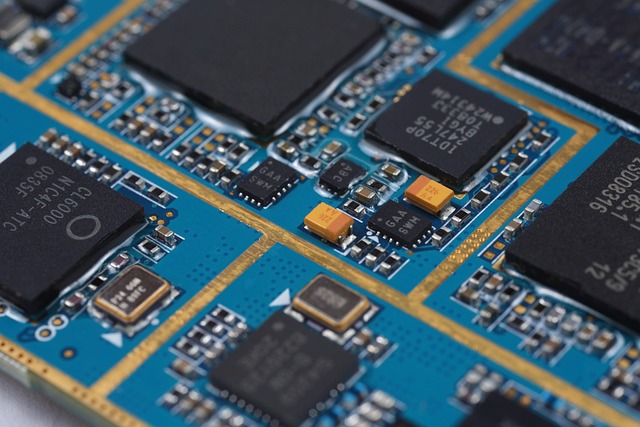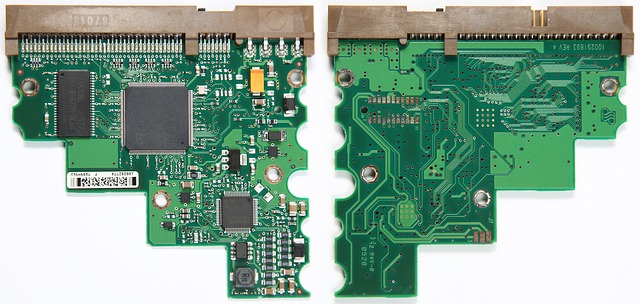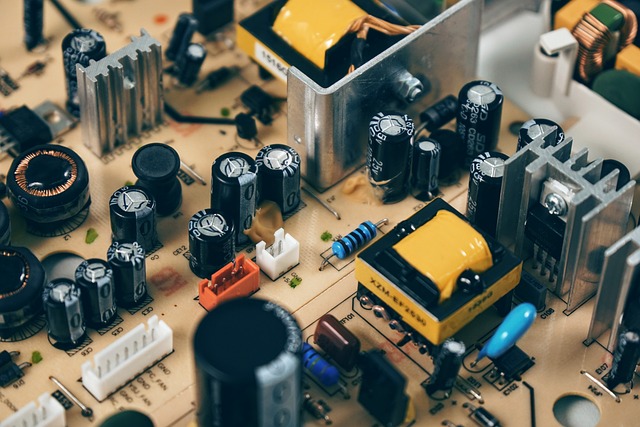Rechargeable batteries, particularly lithium-ion (Li-ion), are transforming personal transportation with their integration into OneWheel electric boards. These innovative unicycles rely on compact, efficient power sources offering sustainable, cost-effective, and environmentally friendly mobility. Advanced battery management systems ensure optimal performance, longer ride times, and safe operation. Regular care, including proper charging and storage practices, prolongs battery life. The evolution of battery tech in OneWheel boards addresses key challenges, featuring solid-state batteries for improved safety, faster charging, extended ranges, and reduced environmental impact. Troubleshooting common issues involves checking battery age, using correct chargers, and preventing damage. OneWheels' adoption contributes to a greener future by reducing emissions and waste, making electric mobility an attractive and eco-conscious choice.
“Unleash the potential of your OneWheel electric board with a deep dive into rechargeable battery power—the heart of sustainable mobility. This comprehensive guide explores the fundamentals, from basic chemistry to advanced technologies powering your favorite self-balancing vehicle. Discover how different battery types enhance performance and longevity, while learning the secrets to optimal charging and maintenance. We also delve into environmental considerations, showcasing the evolving landscape of OneWheel battery technology.”
Understanding Rechargeable Batteries: The Basics

Rechargeable batteries, a fundamental component in modern portable devices and electric vehicles like the OneWheel electric board, have revolutionized power sources. Unlike their disposable counterparts, these batteries are designed to be recharged and reused, offering a more sustainable and cost-effective solution. At their core, rechargeable batteries consist of an anode, cathode, electrolyte, and a protective casing. The interaction between these components enables the storage and release of electrical energy.
One key advantage of rechargeable batteries is their ability to store significant amounts of energy in a compact form. This makes them ideal for powering a wide range of devices, from smartphones to electric boards, ensuring users have reliable power sources without the need for frequent replacements. Furthermore, advancements in technology have led to increased battery life, faster charging times, and improved safety features, making them an increasingly popular choice for eco-conscious consumers.
How OneWheel Electric Boards Utilize Battery Power

OneWheel electric boards have revolutionized personal transportation with their innovative design and efficient use of battery power. These self-balancing, electric unicycles rely entirely on rechargeable batteries to operate, providing a clean and sustainable alternative to traditional modes of transport. The heart of the OneWheel lies in its advanced battery management system, which optimizes energy distribution for smooth and controlled movement.
Each board is equipped with high-capacity lithium-ion batteries that power the electric motor and control systems. As riders navigate, the board’s sensors constantly monitor speed, balance, and battery life, ensuring a safe and enjoyable experience. The efficient design allows for extended ride times, making OneWheels ideal for short commutes, leisure rides, or even as a fun way to explore new urban areas. This seamless integration of battery technology has made OneWheel electric boards a game-changer in personal mobility, appealing to folks who want a swift, eco-friendly, and unique transportation option.
Types of Rechargeable Batteries in OneWheel Devices

OneWheel electric boards, also known as self-balancing scooters, rely on rechargeable batteries to provide their primary power source. The types of rechargeable batteries used in these devices have evolved over time, offering improved performance and longer lifespans. Lithium-ion (Li-ion) batteries are currently the most common choice for OneWheel electric boards due to their high energy density, lightweight design, and ability to withstand numerous charging cycles. This technology ensures efficient power delivery while maintaining a compact form factor, ideal for portable electric boards.
Different battery configurations cater to various performance needs. Some OneWheel devices employ multiple Li-ion cells in series or parallel connections to achieve higher voltage or current outputs, respectively. These modular designs allow for customizable battery capacities, enabling riders to balance power requirements with range and speed. Advanced battery management systems monitor and optimize the health of these cells, ensuring optimal performance and safety during use.
Benefits of Using Rechargeable Batteries Over Disposables

Rechargeable batteries offer a multitude of advantages over disposable options, especially for power-hungry devices like the OneWheel electric board. Firstly, they are environmentally friendly; unlike disposables, rechargeables can be used again and again, significantly reducing electronic waste. This sustainability is not only beneficial for the planet but also cost-effective for users, as it eliminates the need for frequent purchases of new batteries.
Moreover, rechargeable batteries provide a more reliable power source. With a constant supply of energy, users can enjoy uninterrupted rides on their OneWheel electric board without worrying about battery exhaustion. This longevity also translates to increased convenience, as there’s no need to replace batteries frequently, saving time and effort.
Charging and Maintenance Tips for Optimal Battery Life

Maintaining your OneWheel electric board’s battery is essential for extending its lifespan and ensuring optimal performance. Regular charging practices play a significant role in keeping the battery healthy. It’s recommended to avoid letting the battery discharge completely, as this can put unnecessary strain on it. Aim to charge your OneWheel when the battery reaches around 20-30% to maintain a balanced state. Overcharging should also be avoided; most modern devices have built-in protections against this, but it’s still good practice to unplug once the battery is fully charged.
For long-term storage, it’s advisable to keep your OneWheel partially charged, ideally between 30% and 50%. This minimizes the stress on the battery and slows down the aging process. Regular maintenance includes keeping the battery cool and dry, as heat and moisture can degrade its performance. Avoid exposing your OneWheel to extreme temperatures or direct sunlight for extended periods. Additionally, avoid dropping or physically damaging the device, as this can lead to permanent battery damage.
Exploring the Latest Advancements in OneWheel Battery Technology

The world of OneWheel electric boards has seen remarkable progress in battery technology, revolutionizing the way we think about portable power. Researchers and manufacturers are constantly exploring innovative solutions to enhance battery life, energy density, and overall performance. The latest advancements focus on developing more efficient and sustainable batteries, addressing the key challenges faced by OneWheel enthusiasts.
One notable trend is the integration of advanced materials and chemistries, such as solid-state batteries, which promise improved safety, faster charging times, and extended durations between recharges. These cutting-edge technologies aim to deliver higher energy storage capacity while reducing the overall weight and size of the battery packs, making them ideal for compact devices like OneWheel electric boards. Such innovations not only cater to the growing demand for longer ride times but also contribute to a more eco-friendly future by minimizing environmental impact.
Common Battery-Related Issues and Troubleshooting Tips

Rechargeable batteries, while convenient, can present several issues for users of devices like the OneWheel electric board. Common problems include reduced battery life, unexpected shutdowns, and difficulty in charging. To address these, start by checking the battery’s age and condition. Older batteries may have lost their capacity, requiring replacement. Ensure you’re using the correct charger recommended by the manufacturer; incompatible chargers can cause damage or prevent optimal charging.
Next, verify proper connection of the battery to your OneWheel board. Loose connections can lead to inconsistent power supply. Clean any corrosion from battery terminals and ensure they are tightly secured. If overheating is suspected, allow the battery to cool down and avoid exposing it to extreme temperatures. For persistent issues, consult the product’s user manual or reach out to customer support for further troubleshooting guidance specific to your OneWheel electric board.
Environmental Impact: Sustainable Power Solutions for OneWheel Boards

The environmental impact of rechargeable batteries is a significant consideration, especially with the growing popularity of electric mobility solutions like the OneWheel electric board. However, when compared to traditional fuel-based transportation, battery-powered vehicles offer a more sustainable alternative. Rechargeable lithium-ion batteries used in OneWheel boards are designed for longevity and reduced environmental harm. These batteries can be recycled, and many manufacturers are implementing take-back programs to ensure proper disposal or reuse of old batteries.
Moreover, the shift towards electric mobility reduces greenhouse gas emissions and air pollution, contributing to a greener environment. As technology advances, the efficiency of these batteries improves, leading to reduced energy consumption. This, in turn, minimizes the carbon footprint associated with manufacturing and charging OneWheel boards over their lifetime. Sustainable power solutions for these innovative transport devices not only benefit users but also contribute positively to global efforts towards a cleaner, more eco-friendly future.
